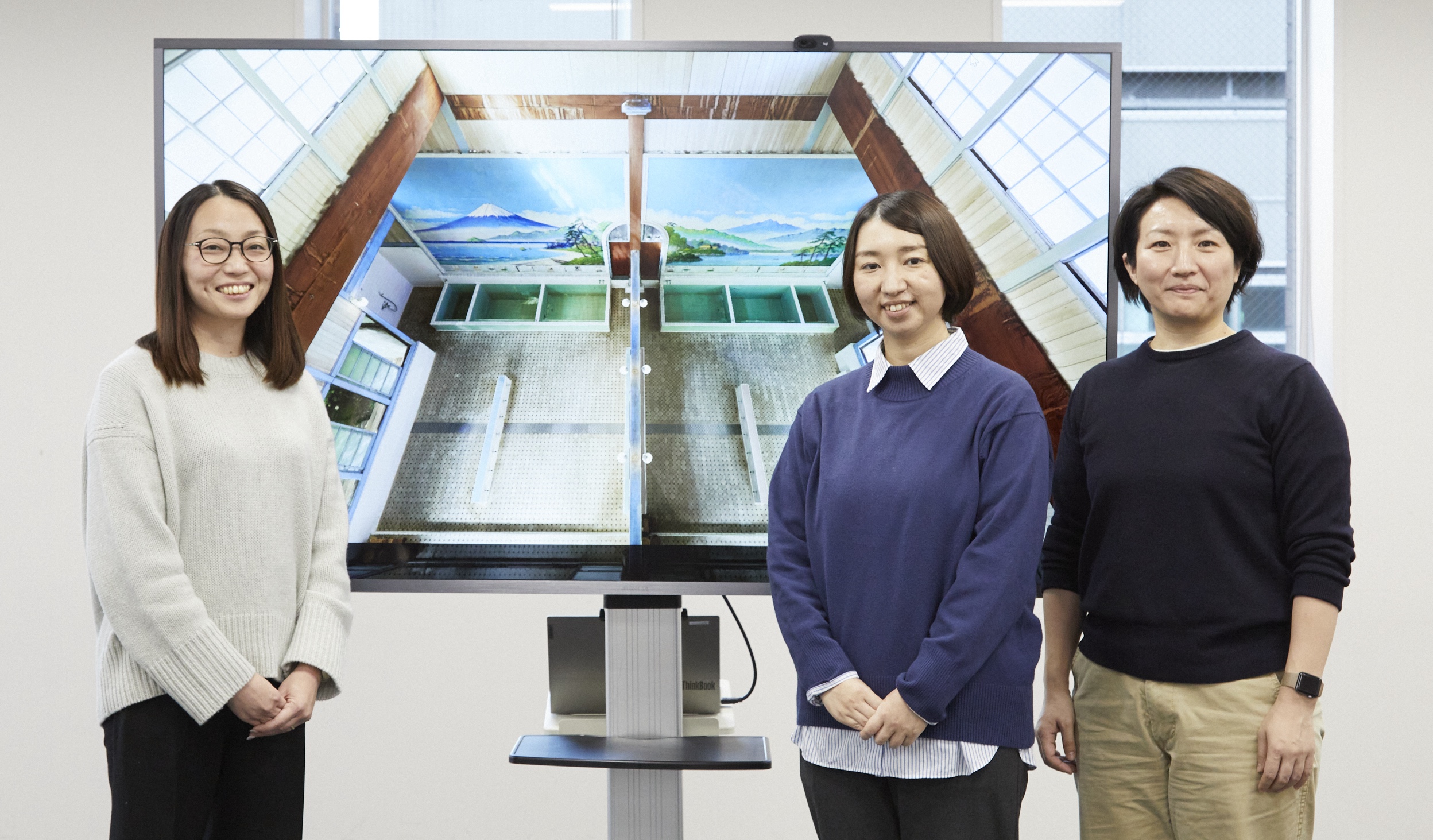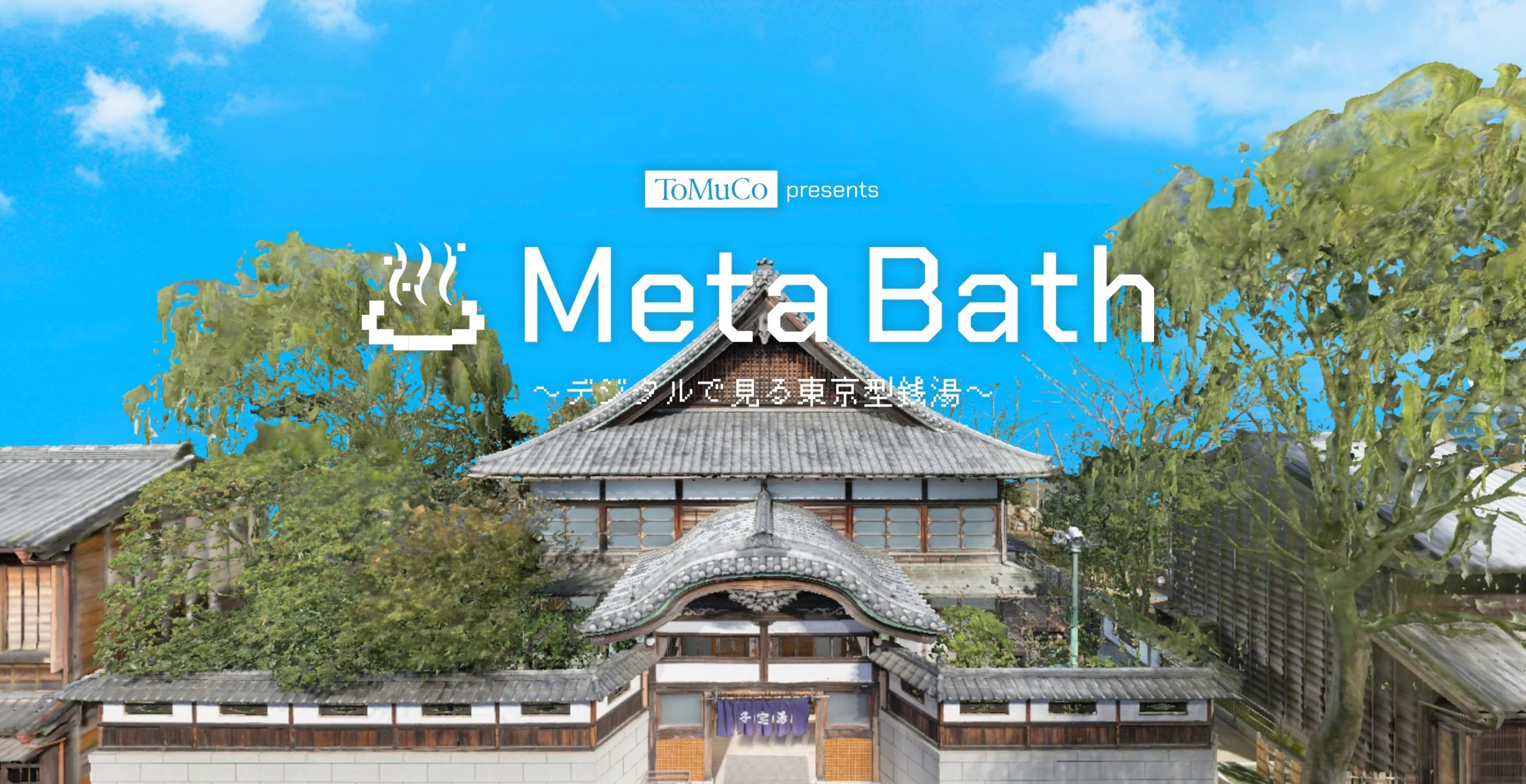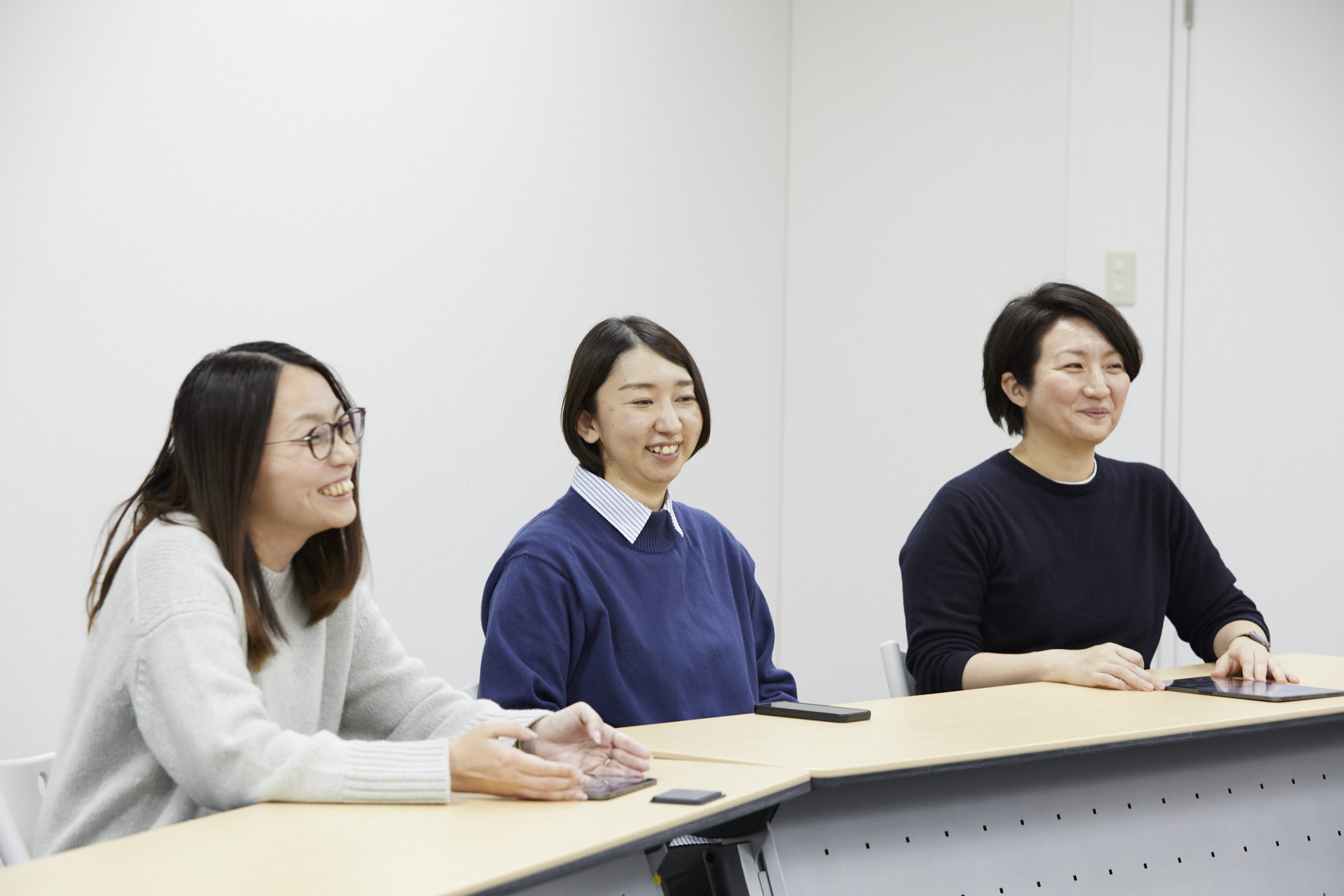Tokyo Metropolitan Foundation for History and Culture is an organization dedicated to promoting arts and culture through the operation of metropolitan cultural facilities, such as art institutions, museums, theatres, and halls, and through various Arts Council Tokyo programs. This article series focuses on people working in the foundation to introduce their jobs and personalities. The third edition features three members of the Digital Creativity Division who are in charge of the TOKYO Smart Culture Project: Kumiko Fukui, Manae Kobayashi, and Minako Taguchi. The first part of the article is based on a round-table discussion among the three on their collaboration with the cultural facilities and their view on the project’s future activities.
*Department names and titles are as of the time of the interview





